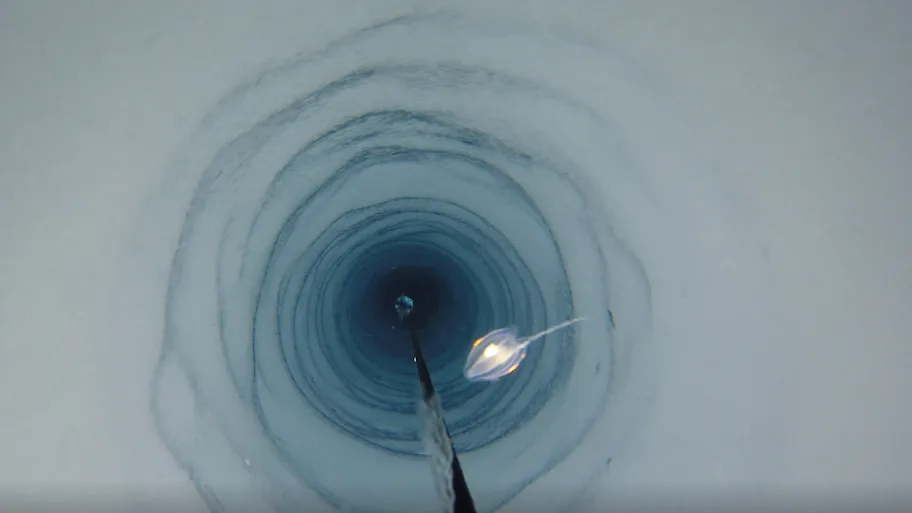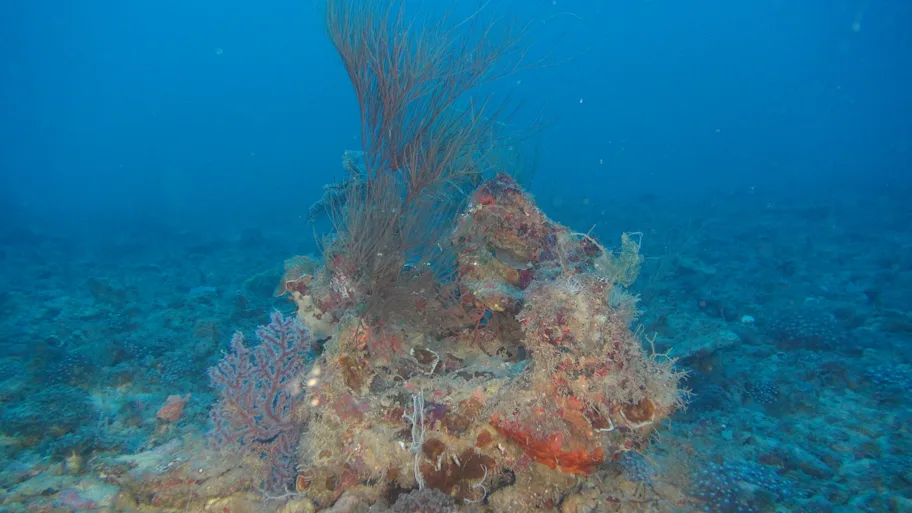
- Science News
- Life sciences
- Scientists raise alarm as bacteria are linked to mass death of sea sponges weakened by warming Mediterranean
Scientists raise alarm as bacteria are linked to mass death of sea sponges weakened by warming Mediterranean
By Mischa Dijkstra, Frontiers science writer

Diseased sponges. Image credit: Fikret Öndes
In 2021, divers off the Turkish Aegean coast first observed dark stinging sponges dying in great numbers. Researchers have now sampled three species of pathogenic Vibrio bacteria, previously known to infect unrelated marine animals, from diseased and dying sponges. Evidence suggests that vibriosis may be a secondary illness that affects already weakened sponges, but is not necessarily the primary agent of the novel disease.
Vibrio bacteria, named for their vibrating swimming motion, span approximately 150 known species. Most Vibrio live in brackish or salt water, either swimming free or living as pathogens or symbionts in fish, crustaceans, molluscs, and corals. Because Vibrio thrive at relatively high temperatures, outbreaks in marine animals are expected to become ever more frequent under global warming. For example, over the past few decades, Vibrio have been implicated in the ‘bleaching’ of subtropical and tropical corals around the world.
Now, researchers from Spain and Turkey have shown that Vibrio bacteria also play a role in outbreaks of mortality of an unrelated sessile marine organism, the dark stinging sponge (Sarcotragus foetidus). The results are published in Frontiers in Microbiology.
“Here we show that pathogenic Vibrio bacteria were abundant in diseased individuals of the dark stinging sponge, during a deadly outbreak first observed in late 2021 in the Aegean Sea,” said Dr Manuel Maldonado, a senior scientist at the Spanish National Research Council (CEAB-CSIC) and a coauthor of the study.
The dark stinging sponge, first recorded by Aristotle in his books, is widespread in the Mediterranean and North Atlantic, typically living at shallow depths. In the summer of 2021 at Izmir, Turkey, coauthor Dr Fikret Öndes – an associate professor at Izmir Katip Celebi University – first learned of a mysterious disease that affected dark stinging sponges locally.
“When I dived and observed the study area and its surroundings, I encountered not only visibly unhealthy sponges, but also dead ones,” said Öndes. He immediately alerted his colleagues, with whom he undertook to study the novel disease.
Link to warm temperatures
During subsequent dives between August and December, the researchers studied 117 dark stinging sponges off Seferihisar on the Turkish Aegean coast. Each individual was photographed and measured, with tissue samples taken for DNA analysis. The majority (64%) of the sponges seemed healthy, but 27% were visibly affected by partial necrosis, while 9% appeared dying or dead.
Download original article (pdf)
From ribosomal RNAs exclusively present in diseased, dying, and dead sponges, the authors detected a total of three Vibrio species: V. fortis, V. owensii, and V. gigantis. These species were previously known to occur in the tissues of corals and diseased crustaceans and shrimp, respectively.
“None of the three pathogenic Vibrio species occurred in all the diseased sponges studied. This may mean that vibriosis is a secondary infection that worsens the course of disease, but isn’t the primary etiological agent. Further research based on the metagenomics of diseased individuals, sampled at several disease stages, is required to resolve this,” said Maldonado.
Consequences for marine ecosystems
That heat-loving Vibrio bacteria play a role in the disease, either as the primary or secondary agent, is borne out by the observation that the disease wasn’t observed later than October. The authors also speculate that the same pathogens may have caused the reported simultaneous mass mortality of shallow-water stony corals in the northern Aegean. Further studies are needed to confirm this.
“Climate change is currently affecting marine ecosystems, including water temperature, and these changes appear to impact disease dynamics in sponges and their pathogens,” said first author Dr Ezgi Dinçtürk from the Department of Aquaculture of Izmir Katip Celebi University.
“Healthy sponges enhance light penetration by clean bacterio- and microphytoplankton from water, take up and release inorganic nutrients, and serve as micro-refuges for a large variety of organisms. Disease outbreaks like this could thus have major consequences for marine ecosystems.”



REPUBLISHING GUIDELINES: Open access and sharing research is part of Frontiers’ mission. Unless otherwise noted, you can republish articles posted in the Frontiers news site — as long as you include a link back to the original research. Selling the articles is not allowed.






